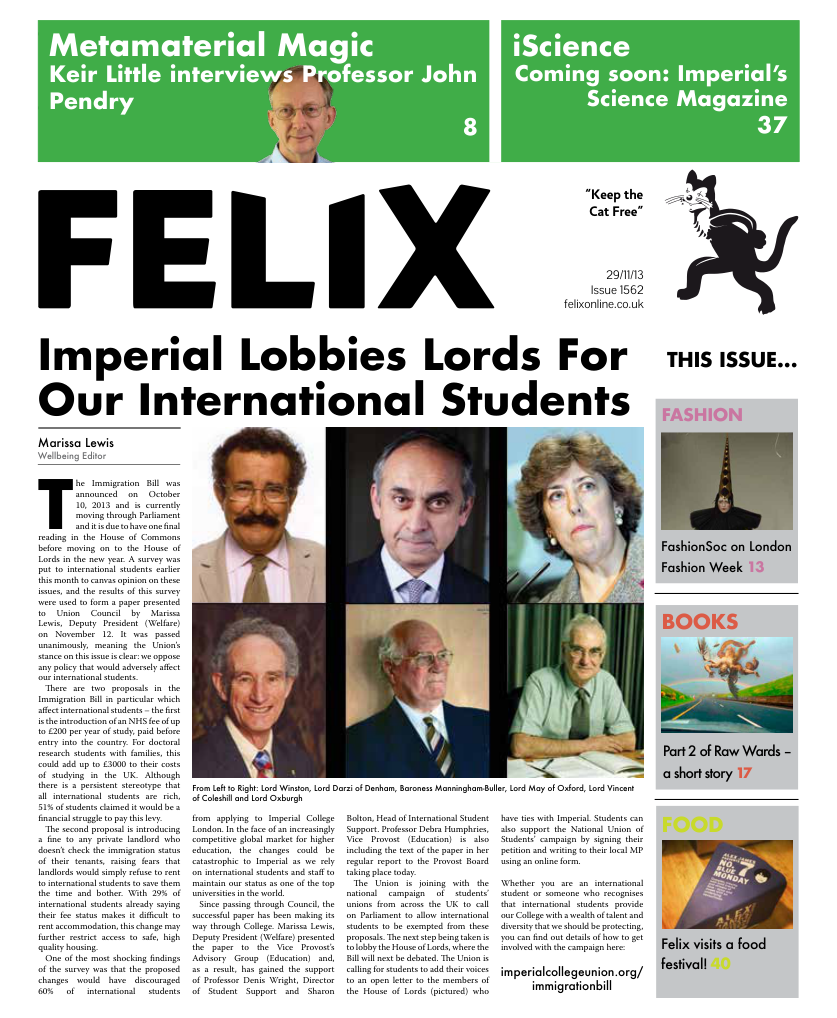Frozen rainbows and corkscrew lasers
Professor Ortwin Hess speaks to Keir Little about his research
Ortwin Hess is known for the ‘trapped rainbow’ principle, but this is just one step towards his exciting vision for metamaterials. “It stops light,” he says about it, “so the only thing it can do is ‘lase’ energy off its surface. Why is this different to a good old normal laser? It doesn’t have a cavity and is about a factor of ten thinner. You could include this in integrated circuits.”
Successful pairing of photonics and electronics would have wide applications, including a practical way of realising quantum computing. “I think the way how one, as a condensed matter physicist, approaches these problems is really quite unique as we know we can do something special with optics because we have an understanding of how to arrange and change matter. The task is to get photonics down to where electronics is, as the wavelength of photons is around a factor of a thousand bigger than that of electrons. Photons are very good for communication over fibres, but very bad for integration into circuits. We’re aiming to change that.
“Two things that go throughout all that I’ve looked at in my academic career are materials and light. I was first drawn to spatial-temporal effects in very small lasers and semiconductors: this was before metamaterials were invented.”
The theorisation by John Pendry of materials with a negative refractive index was the next step in Professor Hess’s research. “My way of thinking about these metamaterials was about what they can do to the speed of light. We looked into controlling the speed of light and saw that under certain conditions, through the clever arrangement of the width of waveguides, one can approach states where the light would need to stop. That realisation led to the trapped rainbow principle.”
In collaboration with Ullrich Steiner’s group at the University of Cambridge, Professor Hess considered a ‘bottom-up’ approach to making metamaterials. By depositing gold on a framework of co-polymers, then selectively etching and removing the polymers, a 3D ‘gyroid’ structure was made which has chirality: it can come in ‘left-handed’ and ‘right-handed’ forms.
“You have this three-dimensional structure with a chiral property, which gives us an avenue to generate metamaterials with optical activity, which means they interact with polarised light, something that normal materials struggle with.
“Having manufactured them, the experimentalists investigated them and found the very disappointing result that although these have a highly chiral structure, they don’t have much optical activity. “This is where we theoreticians came on board and were asked to develop some models. We realised that when wires are helical they have different properties than from when they’re straight. This is one of our major research thrusts at the moment. The aim is to build something that doesn’t exist yet: a laser that emits circularly-polarised light. Can you imagine that?”
Light can be plane polarised, causing all the waves to lie flat in the same direction, or it can be circularly polarised, in which the light corkscrews in a left- or right-handed direction. Circular polarisation is used to create the 3D effect at cinemas, but on the nanoscale could be used to probe the structures of molecules and materials.
“At Imperial we have something that is probably unique worldwide: we can bring together knowledge on metamaterials and knowledge on lasers. Normally, the researcher communities don’t talk or work together. We’re now combining the two using gain and active materials. This has huge implications: it opens up a whole realm of research. There’s no way of controlling light so strongly as with a metamaterial.”
What is plasmonics?
Plasmonics is the the study of free metal electrons which trap light at the interface of a metal and another substance, creating ‘surface plasmons’. This confines light to an electronic scale, and is the basis on which metamaterials science is built. Imperial’s Professor Stefan Maier is a researcher in plasmonics and nanophotonics, who was pivotal in developing the field as a modern science. “The topic is a little older than metamaterials,” he says, “by about one hundred years or so! But it was really revolutionised by the development of nanofabrication, so new research in plasmonics began at the end of the 90s and the turn of the century. “I did my PhD at CalTech at that time, which showed that you can make tiny waveguides far below the diffraction limit based on surface plasmons.” This discovery was key to enabling the research of many other plasmonics and metamaterials scientists. “I think the most exciting applications are nanoscale biosensors and highly efficient light sources. If you focus light down to the nanometre scale, you can interface it with molecules.”






